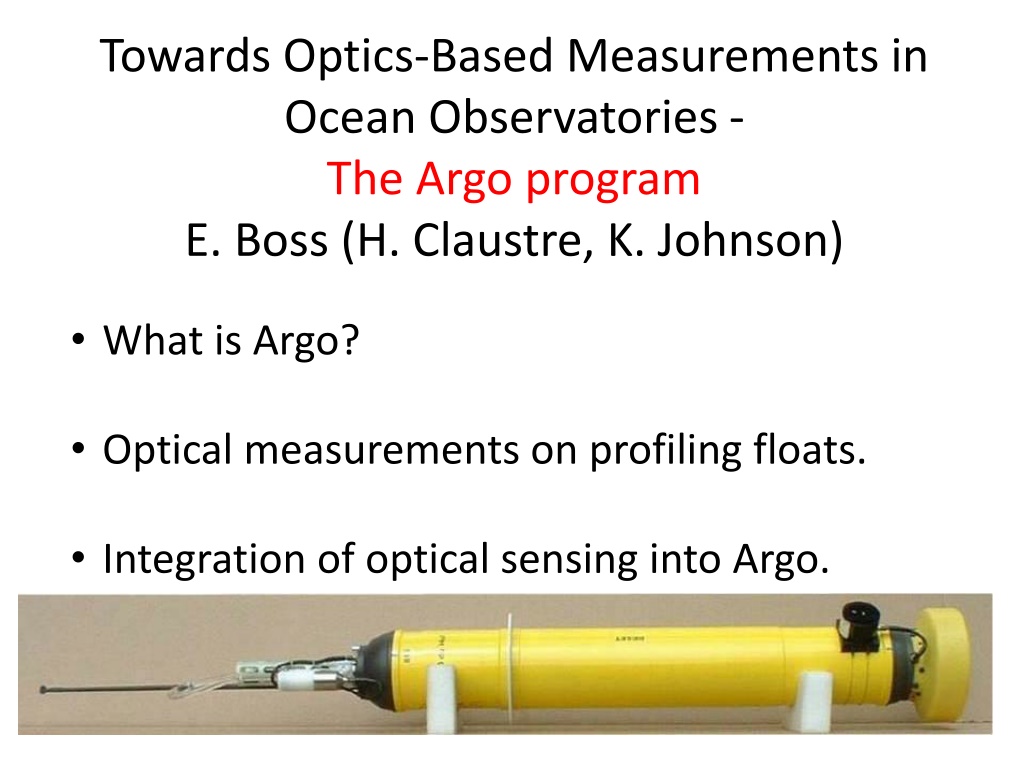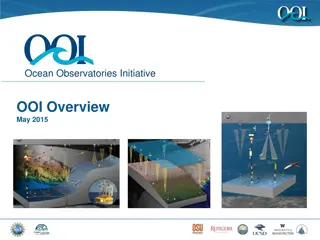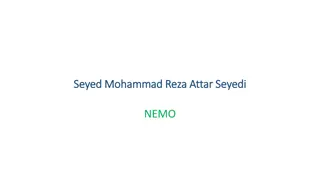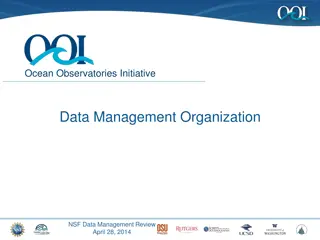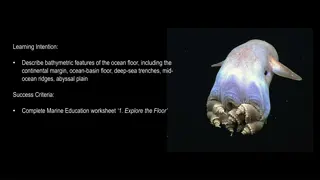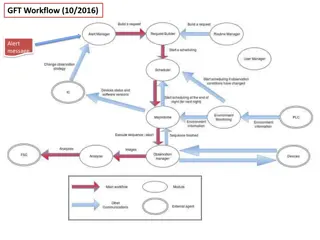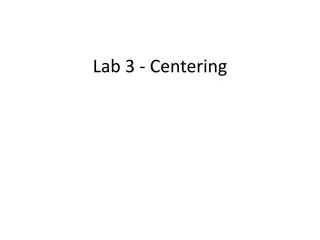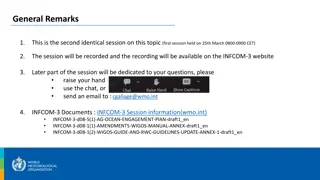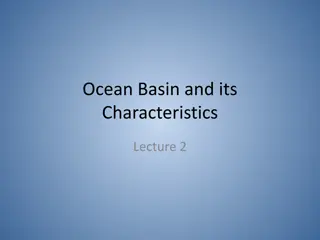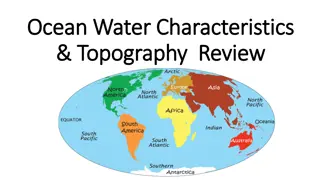Advancements in Optical Measurements for Ocean Observatories: The Argo Program
The Argo program integrates optical sensing into ocean observatories using profiling floats to gather data from the deep sea. With nearly 1,000,000 profiles to date, the Argo Observing System offers a global, real-time monitoring solution. Utilizing optics on profiling floats has enabled observations of phenomena like spring blooms and iron fertilization. Ongoing advancements aim to improve data quality and ecosystem modeling for a sustainable future.
Download Presentation

Please find below an Image/Link to download the presentation.
The content on the website is provided AS IS for your information and personal use only. It may not be sold, licensed, or shared on other websites without obtaining consent from the author. Download presentation by click this link. If you encounter any issues during the download, it is possible that the publisher has removed the file from their server.
E N D
Presentation Transcript
Towards Optics-Based Measurements in Ocean Observatories - The Argo program E. Boss (H. Claustre, K. Johnson) What is Argo? Optical measurements on profiling floats. Integration of optical sensing into Argo.
The Argo array On average, a profile from 2000m every 10days
The Argo Observing System Made entirely of profiling floats (relatively homogeneous technology). Global in scope and in participation Climate focus (GODAE, CLIVAR, GOOS) Real-time and delayed mode QC Nearly 1,000,000 profiles to date!
Human-In-The-Loop Delayed-mode data flow: Yearly ADMT meeting to keep improving this system
The Argo Observing System Relatively cheap (~$100 per profile) Sustained (measurements where and when we cannot be there). Limited in power, real-estate and bandwidth (improving all the time). Little control where platform drifts to (improving via modeling/assimilation).
Optics on profiling floats Greg Mitchell radiometer observing the spring bloom in the Sea of Japan Bishop Observation of dust iron fertilization and artificial iron fertilization. Carbon explorer. PIC-sensor. Claustre using transmissometry to compute growth rate using 3 day-time profiles Boss 3yrs of sustained observations. Challenging the Sverdrup model of the spring bloom in the NA. Boss Testing the use of profiling floats as vicarious calibration platform (poster @OO2012)
3 years of data Eddy event
A vision for the future: the Riley (or NPZ) float N: ISUS P: F_chl, bb or beam-c Z: LOPC/Gorsky/novel cheap acoustic bb +PAR & O2 Minimum sensor-suite to constrain ecosystem models. Our vision is often constrained to be bottom-up by the lack of cheap zooplankton sensors.
The Bio-Argo community is getting organized: Oceanography (2009) Toward the Implementation of a Global Autonomous Biogeochemical Observing System. WHOI, July 19, 2011 Link with Euro-Argo highly welcomed Bio-Argo Community White Paper Bio-platform in open Ocean Plenary Paper
Bio-optics on Argo where are we today: Invited to ADMT-12 to build the Real-time QC framework for F_chl, bb and Nitrate. Euro-Argo: 20% of floats with BGC sensors. US: regional projects in planning stage. Some limiting factors: 1. Cost of sensors. 2. Sensitivity of sensors. 3. Trained personnel at DACs
